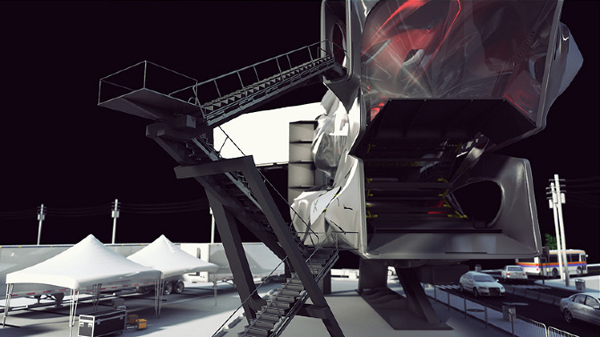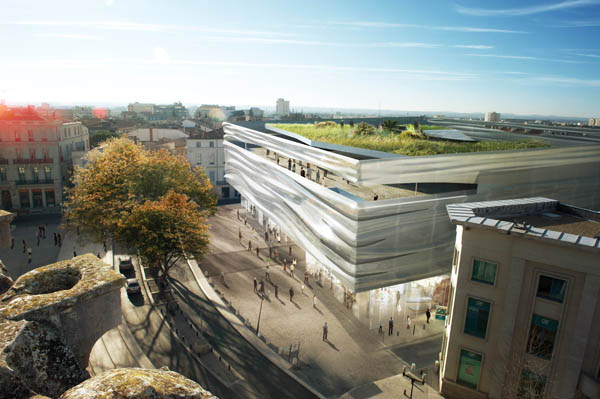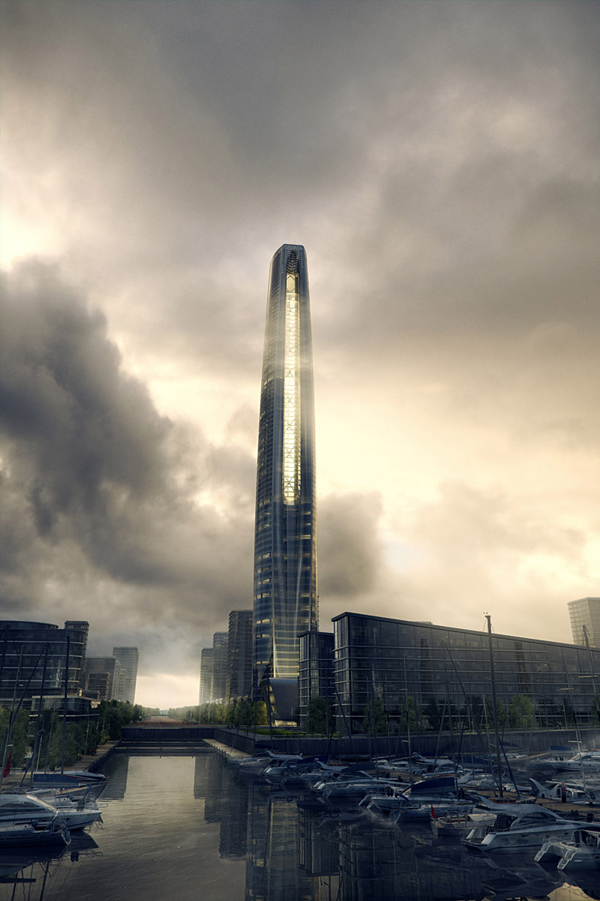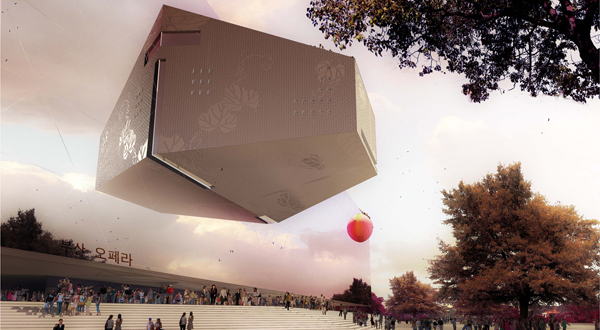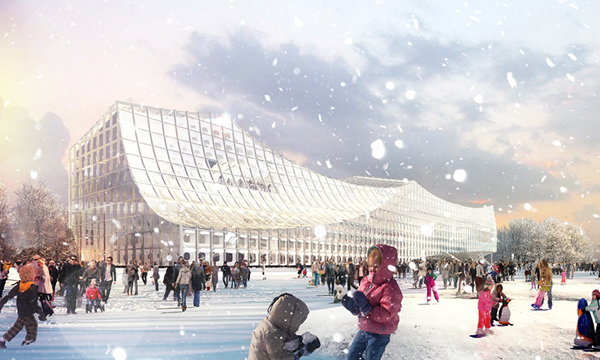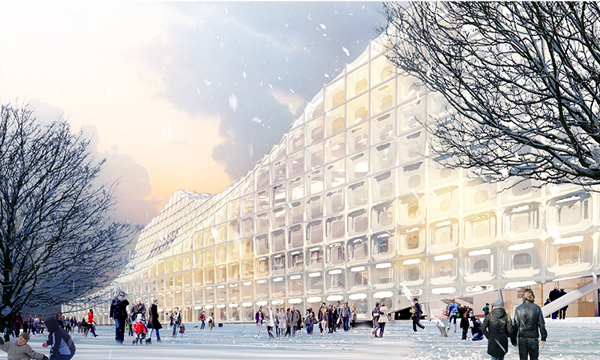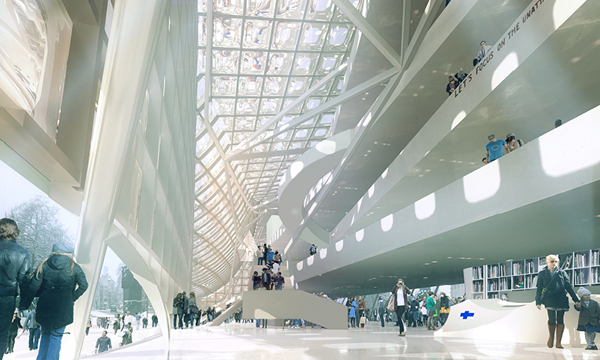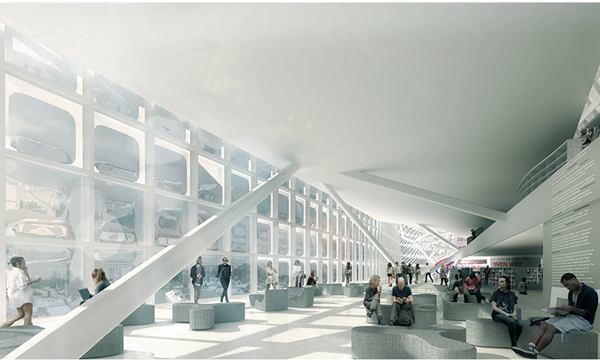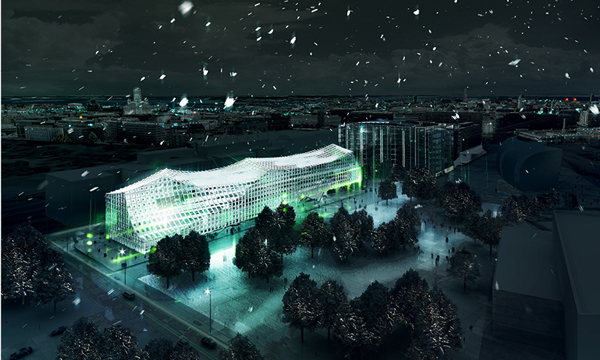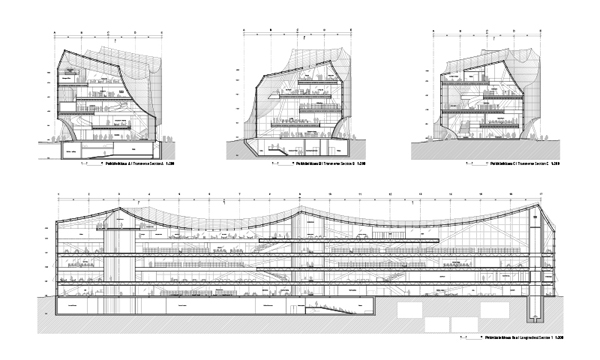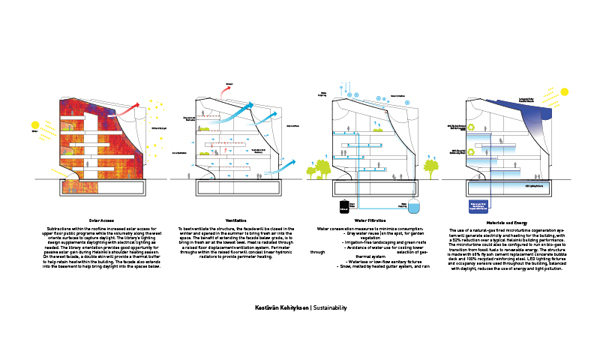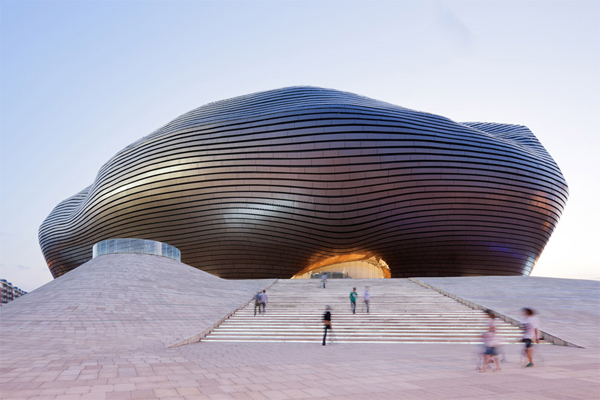This small scale experimental theater in Taiyuan, China, is one of the latest projects of Los Angeles based practice, Yaohua Wang. Located at a cross road in Taiyuan Yin Ze District, this mechanical wonder is an investigation, setting new standards for theater design. Due to its interactive nature, it offers one dynamic space experience – as the audience climbs up the stairs to get access to the theater, the entire site context around the theater is changing and revealed.
The theater building consists of two main spaces, stacked vertically. The envelope of the performance space is sound proof glass, therefore providing great view to the city and creating exiting relationship between private, art activity and the public space.
The structural system lifts the theater up from the ground, in order to create public outdoor shelter space. The structure of the stage can be lowered down, through a mechanical system so it connects to the backstage, which is under the performance space. Simultaneously, artists can elevate and disappear in front of the audience, through the same system. This active and surprising theater experience opens whole new horizon of opportunities for architects, designing performance facilities. Read the rest of this entry »

